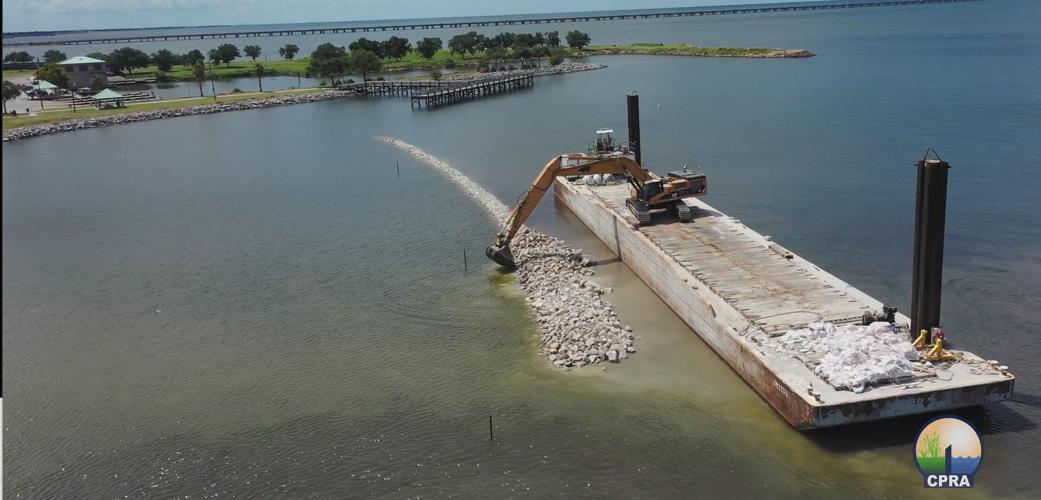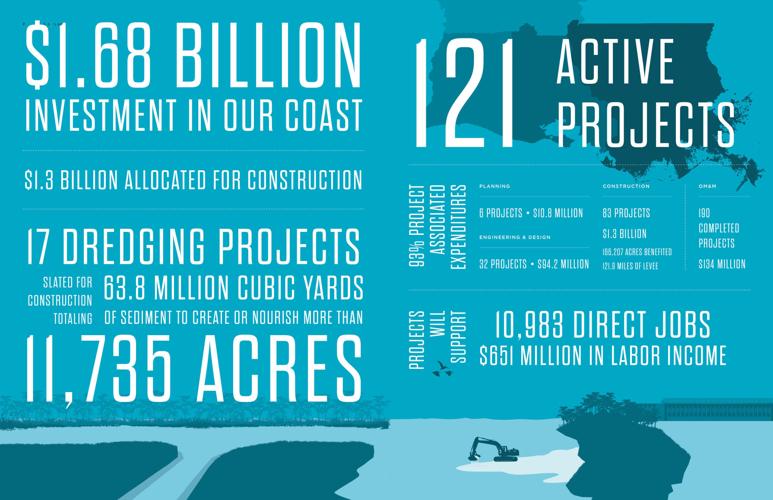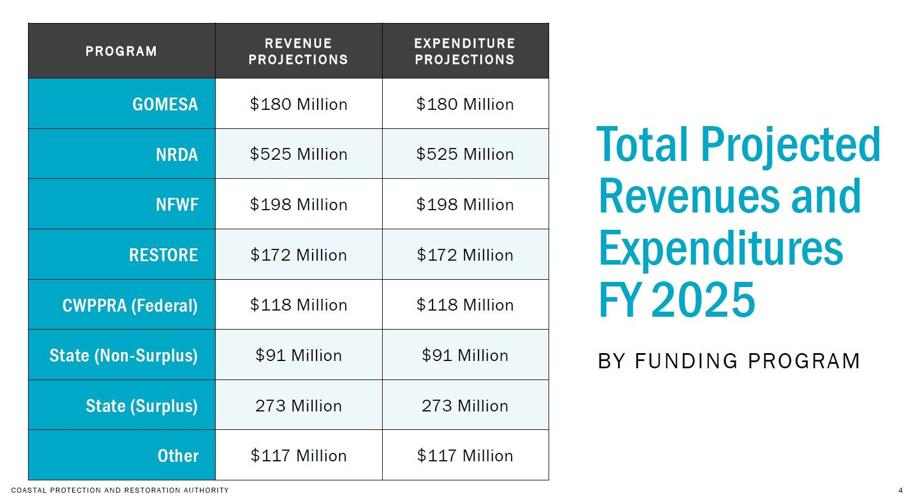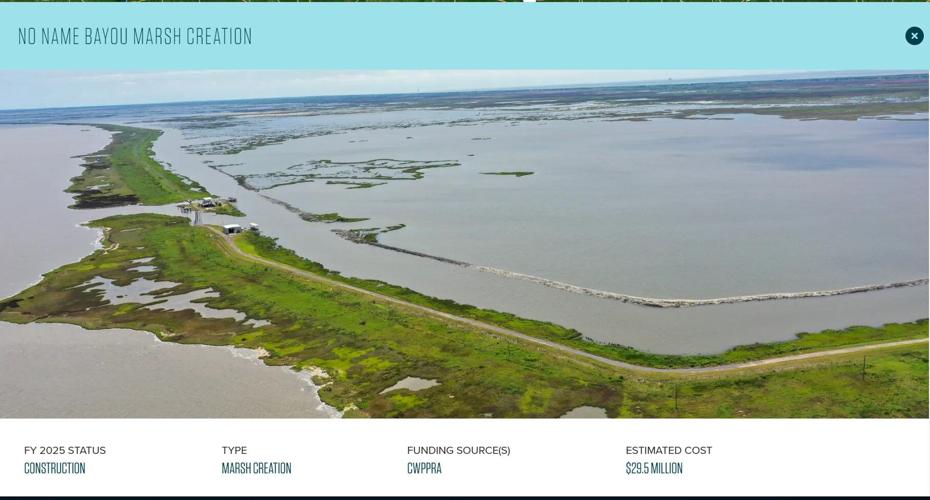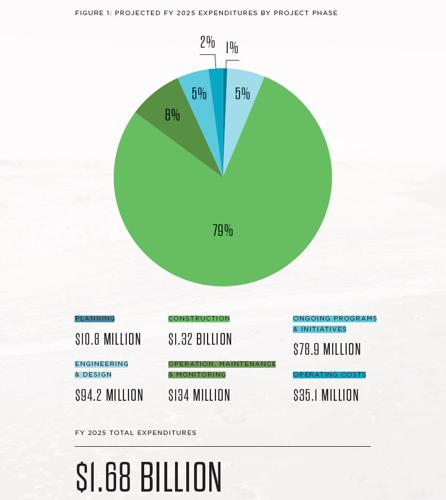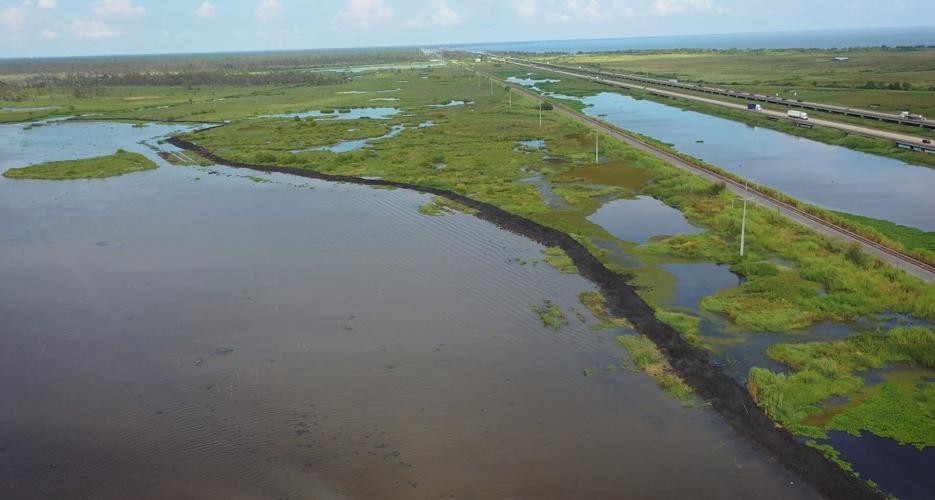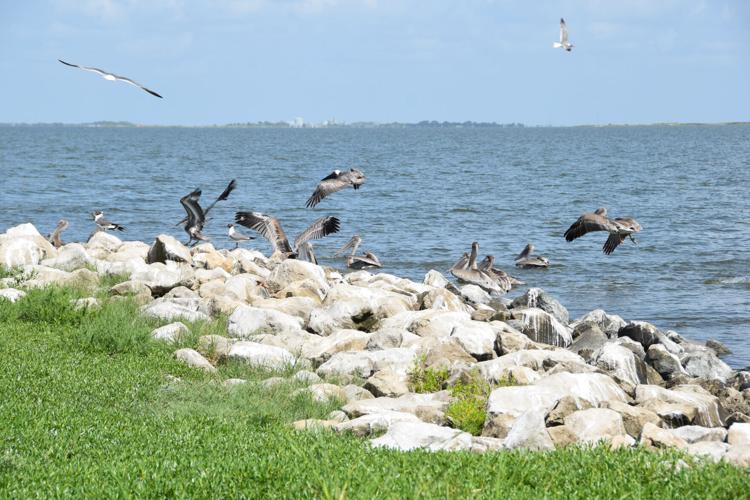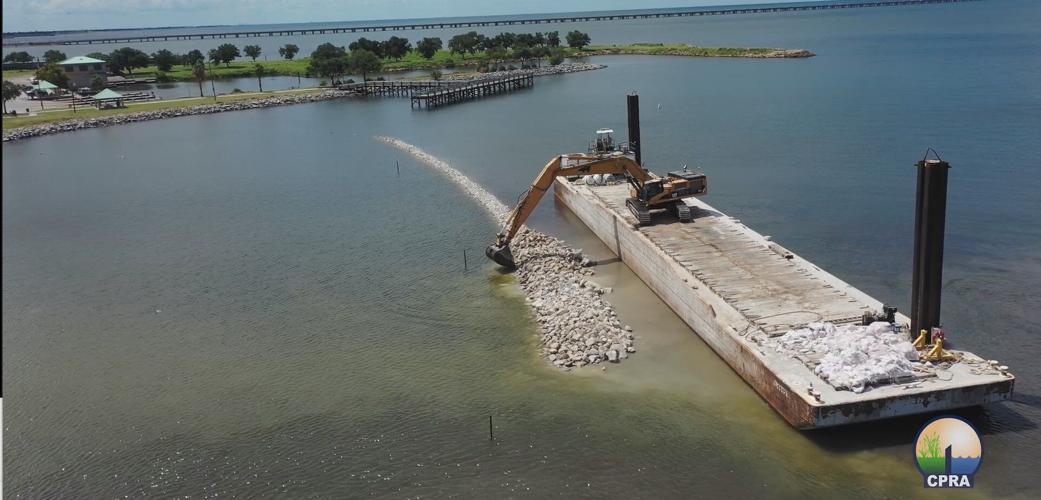A "living shoreline" in Jefferson Parish, a lock complex for the Houma Navigation Canal and work on an unprecedented Mississippi River diversion are among a long list of coastal restoration and hurricane risk reduction projects state officials hope to prioritize in the next fiscal year, a draft plan amounting to $1.68 billion shows.
That's the largest amount in the 16-year history of annual spending plans for the state's Coastal Protection and Restoration Authority and about $60 million more than the current fiscal year. The draft plan is for fiscal 2025, which actually begins in July of next year.
The new plan comes with a degree of uncertainty considering Gov.-elect Jeff Landry takes over from John Bel Edwards in January. But much of the money in the plan comes from fines related to the 2010 BP oil spill, and how that cash can be spent is limited.
The biggest chunk of the total, about $1.32 billion, will pay for construction costs for 83 projects. Another 32 projects are undergoing engineering and design work and eight projects are in their planning phase.

This slide contains the major components of the proposed fiscal year 2025 annual coastal restoration and hurricane protection plan. (Coastal Protection and Restoration Authority)
"Team coastal has unprecedented efforts in front of us to implement projects this year that will continue to make our coastal communities more resilient and restore coastal wetlands in an integrative effort," said CPRA deputy executive director Greg Grandy.
He pointed out that a Greater New Orleans Inc. economic analysis of the draft plan concluded that it would create 10,983 jobs, representing $651 million in labor income alone.

This slide lists the major sources of money that will pay for Louisiana's proposed $1.68 billion fiscal year 2025 annual plan for coastal restoration and hurricane risk reduction. (Coastal Protection and Restoration Authority)
The annual plan will go through a public comment period and an updated final version will be presented to the authority board on March 13. The plan will be submitted to the Legislature on March 19.
State funds for individual projects must still be included in various state budget legislation approved separately by the Legislature, if the funds have not yet already been appropriated. The biggest source of money in the plan — nearly $900 million — is from fines related to the BP spill.

This graphic shows how the proposed $1.68 billion included in the fiscal year 2025 coastal restoration and hurricane risk reduction annual plan will be divided among construction and other uses. (Coastal Protection and Restoration Authority)
The plan also will use $180 million in federal offshore oil revenue given to the state through the Gulf of Mexico Energy Security Act. It calls for a further $273 million from state surplus funds and another $91 million from non-surplus funds, which usually means from the state's bond finance programs.
Grandy said the plan includes 17 projects where dredged sediment will be used to build new land.
"You don’t have to look too far back in CPRA’s history to find when we averaged 1½ dredging projects a year,” he said.
Those projects will use 63.9 million cubic yards of sediment — enough to fill the Caesars Superdome nearly 14 times — to create or nourish more than 18 square miles of land.
The plan also includes $463 million for the beginning of the expected five-year construction of the $2.92 billion Mid-Barataria Sediment Diversion on the west bank of Plaquemines Parish, the largest coastal restoration project ever for the state. It seeks to set aside another $20.3 million to move forward with permitting for the proposed $799 million Mid-Breton Sediment Diversion on the parish's east bank.
The annual plan lists projects in three coastal regions.
Southeast Region
There are 66 projects funded in the southeast region, including 47 in construction, 16 in engineering and design, and three in planning. Here are a handful of the bigger projects:
LaBranche East Marsh Creation is an ongoing project to create 762 acres of new land and nourish 140 acres of marsh south of Interstate 10 in St. Charles Parish using sediment from Lake Pontchartrain. The 2025 plan calls for spending $6.8 million. The total cost is estimated at $56.9 million.
Rosethorne Tidal Protection includes new levees, about 8,000 feet of floodwall and floodgates aimed at protecting communities in the Lafitte area from tidal flooding. The plan calls for spending about $15.7 million, while the full cost of the project is about $25 million.
Jefferson Parish Bucktown Living Shoreline Protection, a green infrastructure project along the Lake Pontchartrain shoreline, includes nine rock breakwaters, 22 acres of sediment and vegetation and a 20-foot open water “blueway” to be used by kayakers and canoers, all aimed at helping protect hurricane levees from storm surge. The plan calls for $3.5 million, which will match funds already obtained by Jefferson Parish from the National Fish and Wildlife Federation’s National Resilience Fund Program.

Pelicans at HNC Island in Terrebonne Bay. The Terrebonne Houma Navigation Canal Island Restoration project will expand this eroding island to about 50 acres, with $28 million to be spent in fiscal year 2025. (U.S. Fish & Wildlife Service)
South Central Region
There 39 active projects in this region, including 26 in construction, 10 in engineering and design and three in planning.
East Grand Lake Upper Region in the Atchafalaya Basin includes a dozen restoration features aimed at re-establishing water flows to improve water quality. The plan includes $1.5 million and lists a total cost of $3.6 million.
Morganza to the Gulf is a 98-mile hurricane levee project in the Houma area. The annual plan calls for spending $18.2 million. The full cost of the levee system is estimated at $6.6 billion.
Terrebonne HNC Island Restoration Project will use dredged sediment to restore the island to about 50 acres, designed to provide habitat for colonial nesting water birds including brown pelicans, terns and laughing gulls, with $28 million to be spent in 2025.
Houma Navigation Canal Lock Complex will provide navigation along the canal in Terrebonne Parish, add storm surge protection and help in distributing freshwater. The 2025 funding includes $110 million. The total project cost is estimated at $358 million.

Aerial view of where the No Name Bayou Marsh Creation & Nourishment project will be built in Cameron Parish. The proposed fiscal year 2025 annual plan calls for spending $5.2 million on the project, whose total cost is estimated at $29.5 million. (Coastal Protection and Restoration Authority)
Southwest Region
There are 16 active projects in this region, including 10 in construction and six in engineering and design.
No Name Bayou Marsh Creation & Nourishment includes the creation and nourishment of 533 acres of emergent saline marsh along the Calcasieu Lake in Cameron Parish. The plan includes $5.2 million, with the total cost estimated at $29.5 million.
North Vermilion Bay Shoreline Protection includes construction of approximately 9500 feet of shoreline protection along Vermilion Bay. The plan includes $9.17 million in 2025, and its total cost is estimated at $9.9 million.
Southwest Coastal Louisiana Program, a joint endeavor of the Army Corps of Engineers and CPRA, is aimed at reducing flood risk for thousands of structures in Cameron, Calcasieu and Vermilion parishes through voluntary elevation grants for homeowners and flood protection for businesses. It also includes several environmental restoration projects aimed at restoring water flows in the Calcasieu River basin. The 2025 plan includes $10 million.
Public hearings on the annual plan will be held:
Jan. 10, 2024, Elmwood, Joseph S. Yenni Building, second floor council chambers, 1221 Elmwod Park Boulevard.
Jan. 16, 2024, Houma, Terrebonne Civic Center, 346 Civic Center Road.
Jan. 17, 2024, Lake Charles, Calcasieu Parish School Board, 1618 Mill St.
Those hearings include an open house between 5:30 p.m. and 6 p.m., followed by a presentation.
An online public hearing will be held from 1:30 p.m. to 2:30 p.m. on Jan. 18. Details to connect will be available later at coastal.la.gov/calendar.
The draft annual plan and an interactive map is available online at AP25.COASTAL.LA.GOV. Public comments can be submitted through Feb. 28, 2024, at a link on that site, by email to coastal@la.gov, or by mail to Annual Plan Comment, 150 Terrace Avenue, Baton Rouge, LA 70802.

